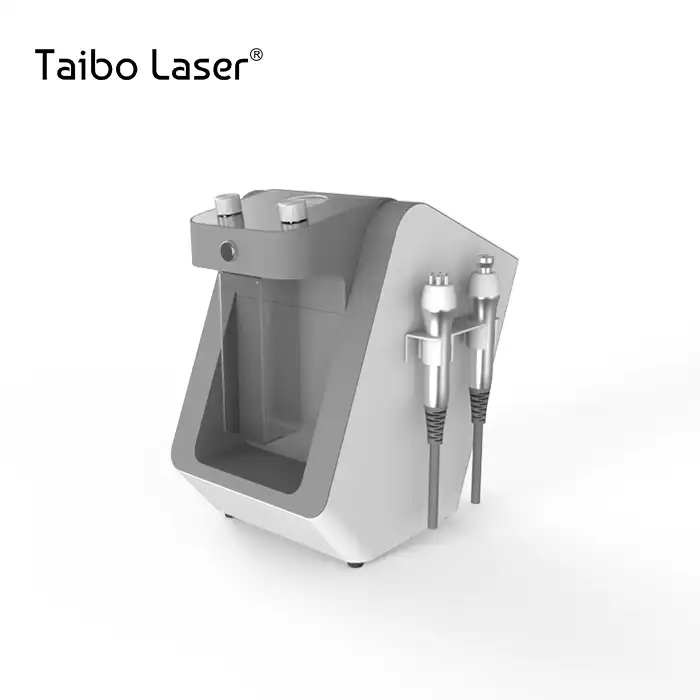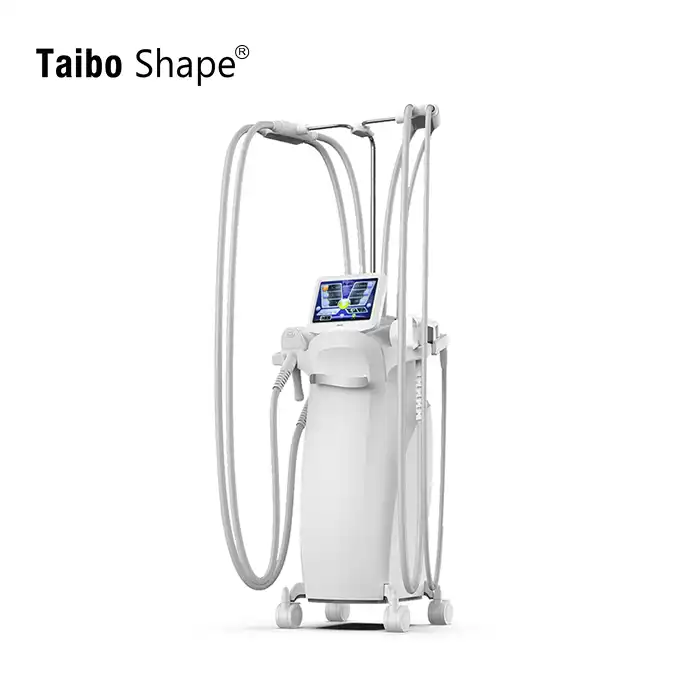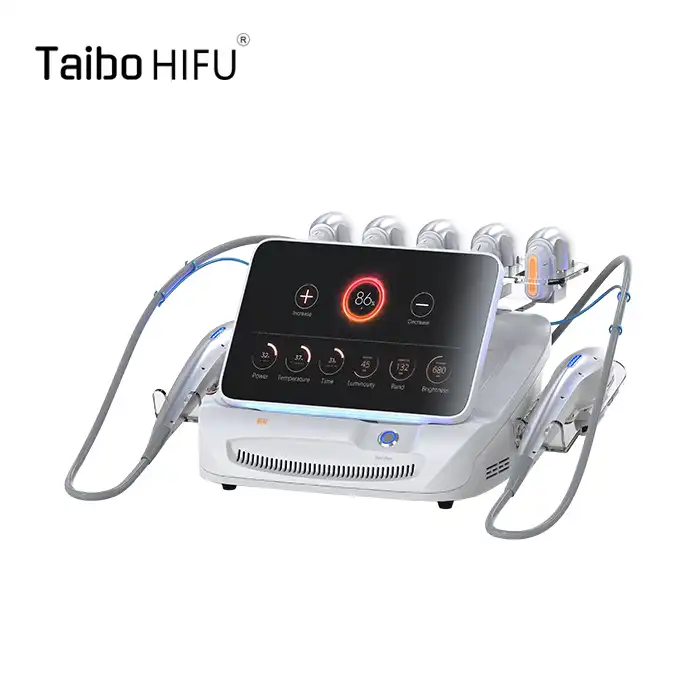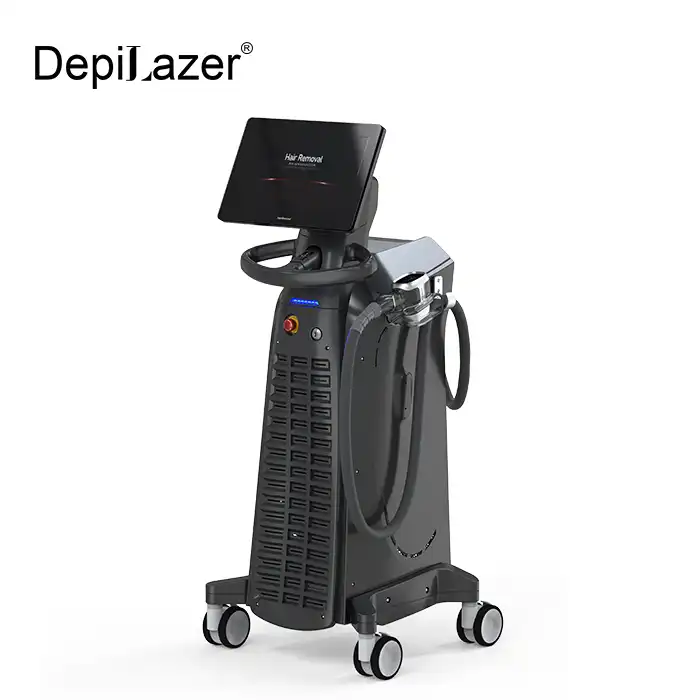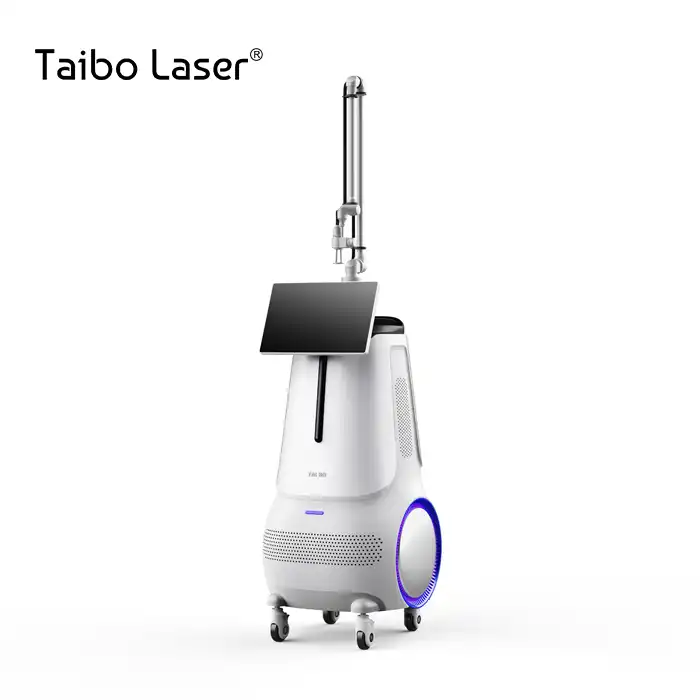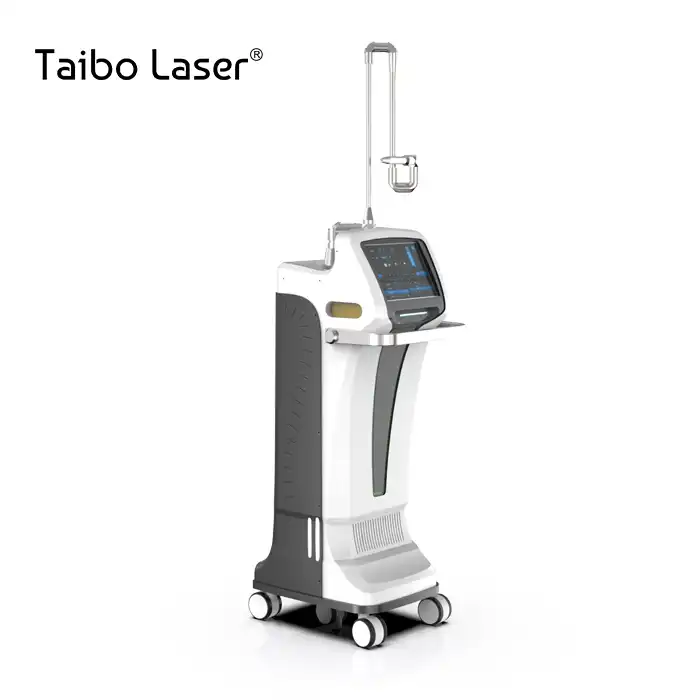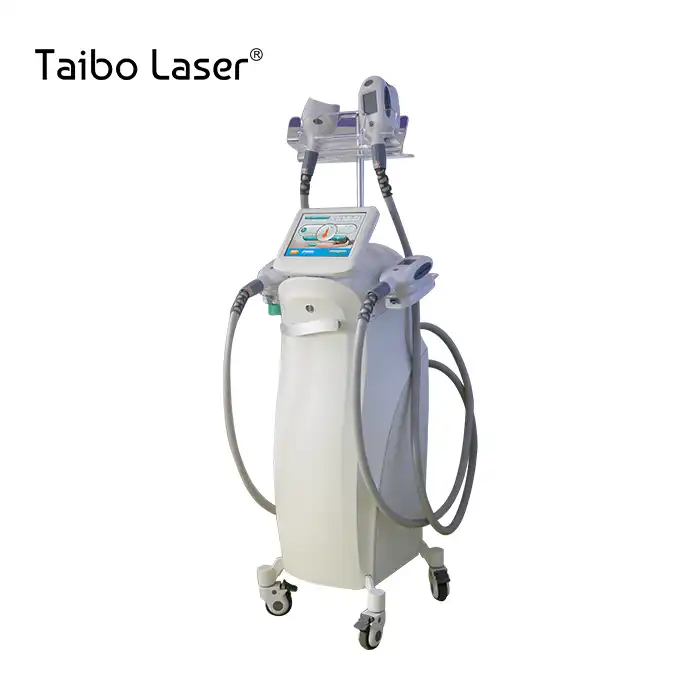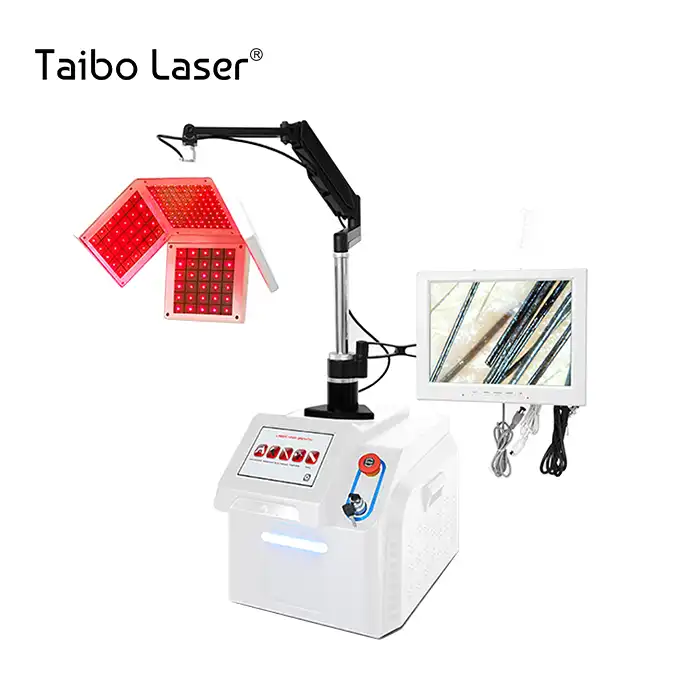
Q Switch Tattoo Removal Machine for Beginners: Everything You Need to Know
2025-08-11 09:00:01
The growing popularity of tattoo removal services has created unprecedented demand for advanced laser technology in the beauty industry. For professionals entering this lucrative market, understanding q switch tattoo removal machines is essential for success. This comprehensive guide explores the fundamental principles, practical applications, and business considerations of Q switch tattoo removal technology, providing beginners with the knowledge needed to make informed decisions about equipment selection and treatment protocols. From understanding laser wavelengths to evaluating equipment specifications, this article serves as your complete resource for navigating the world of professional tattoo removal services.
Understanding Q Switch Tattoo Removal Technology
The Science Behind Q Switch Laser Technology
Q switch tattoo removal machines represent a revolutionary advancement in laser technology, utilizing the principle of selective photothermolysis to target tattoo pigments with unprecedented precision. The Q switch technology works by generating extremely short pulses of high-energy laser light, typically lasting only nanoseconds or picoseconds. When this concentrated energy strikes tattoo pigments embedded in the dermis, it creates a photoacoustic effect that shatters the ink particles into microscopic fragments. These fragmented particles are then small enough to be naturally eliminated by the body's lymphatic system over the following weeks and months. The effectiveness of a q switch tattoo removal machine lies in its ability to deliver energy in such brief pulses that surrounding skin tissue remains largely unaffected by heat buildup. This selective targeting mechanism ensures that only the tattoo pigments absorb the laser energy, minimizing collateral damage to healthy skin cells. Modern Q switch systems typically operate at multiple wavelengths, including 532nm for red and orange pigments, 755nm for green and blue colors, and 1064nm for black and dark blue tattoos. This multi-wavelength capability allows practitioners to treat virtually any tattoo color combination effectively, making these machines versatile tools for comprehensive tattoo removal services.
Key Components and Operating Principles
A professional q switch tattoo removal machine consists of several critical components working in harmony to deliver optimal treatment results. The laser generator serves as the heart of the system, producing the high-energy light pulses necessary for pigment destruction. The optical delivery system, including articulated arms and handpieces, ensures precise beam delivery to the treatment area while maintaining consistent energy density across the spot size. Advanced cooling systems, whether air or water-based, protect both the laser components and patient skin from excessive heat accumulation during treatment sessions. The control interface of modern Q switch systems features sophisticated software that allows practitioners to adjust parameters such as energy output, pulse frequency, and spot size according to specific treatment requirements. Many contemporary machines incorporate built-in safety features, including skin tone sensors and energy monitoring systems, which help prevent overtreatment and ensure consistent results. The pulse duration control is particularly crucial, as shorter pulses generally provide more effective pigment fragmentation while reducing thermal damage to surrounding tissues. Understanding these operational principles enables practitioners to optimize treatment protocols for different tattoo types and patient skin characteristics.
Advantages Over Traditional Laser Systems
Q switch tattoo removal machines offer significant advantages over older laser technologies, particularly in terms of treatment efficacy and patient comfort. Traditional continuous-wave lasers often caused extensive thermal damage to surrounding skin, resulting in prolonged healing times and increased risk of scarring. In contrast, Q switch systems deliver energy in such brief pulses that thermal diffusion is minimized, allowing for more aggressive treatment of stubborn pigments without compromising skin integrity. This improved safety profile enables practitioners to achieve faster clearance rates while maintaining high patient satisfaction levels. The precision of q switch tattoo removal machine technology also allows for selective treatment of specific tattoo areas without affecting adjacent skin. This capability is particularly valuable when treating multi-colored tattoos or when patients desire partial tattoo modification rather than complete removal. Additionally, the reduced thermal damage associated with Q switch pulses typically results in less post-treatment discomfort and faster healing compared to older laser technologies. These advantages have made Q switch systems the gold standard for professional tattoo removal services, with many practitioners reporting higher treatment success rates and improved patient retention when upgrading to modern Q switch equipment.
Choosing the Right Q Switch Machine for Your Practice
Essential Technical Specifications to Consider
When selecting a q switch tattoo removal machine for your practice, understanding key technical specifications is crucial for making an informed investment decision. Energy output capability represents one of the most important factors, with professional systems typically offering adjustable energy levels ranging from 100mJ to 2000mJ per pulse. Higher energy capabilities provide greater flexibility in treating resistant tattoos and darker skin types, though the ability to operate effectively at lower energies is equally important for treating delicate areas and lighter skin tones. The energy density, measured in joules per square centimeter, directly impacts treatment efficacy and should be sufficient to achieve therapeutic thresholds for all common tattoo pigments. Wavelength versatility is another critical consideration, as different tattoo colors respond optimally to specific laser wavelengths. A comprehensive q switch tattoo removal machine should offer at least two wavelengths, with 532nm and 1064nm being the most versatile combination for treating the majority of tattoo colors. Some advanced systems include additional wavelengths such as 755nm, which provides enhanced effectiveness against green and blue pigments that can be challenging to remove with standard wavelengths. The pulse duration specification, whether nanosecond or picosecond, affects the fragmentation mechanism and treatment outcomes, with shorter pulses generally providing more efficient pigment breakdown.
Evaluating Build Quality and Reliability
The construction quality and reliability of a q switch tattoo removal machine directly impact both treatment outcomes and long-term operational costs. Professional-grade systems should feature robust laser generators with proven longevity, typically backed by comprehensive warranty coverage and established service networks. The optical delivery system, including mirrors, lenses, and fiber optic components, must maintain precise beam characteristics over thousands of treatment sessions. High-quality machines incorporate self-diagnostic features that monitor system performance and alert operators to potential issues before they affect treatment quality. Cooling system efficiency is particularly important for maintaining consistent performance during high-volume treatment schedules. Air-cooled systems offer simplicity and lower maintenance requirements, while water-cooled systems typically provide superior thermal management for continuous operation. The user interface should be intuitive and responsive, allowing practitioners to adjust treatment parameters quickly and accurately during patient sessions. Additionally, the physical design should accommodate the workflow requirements of your treatment space, with consideration for factors such as mobility, storage requirements, and electrical specifications that match your facility's infrastructure.
Budget Considerations and Return on Investment
Investing in a q switch tattoo removal machine requires careful analysis of both initial costs and long-term financial returns. Entry-level professional systems typically range from moderate to significant capital investments, while high-end machines with advanced features command premium pricing. However, the treatment revenue potential for tattoo removal services can provide attractive returns, with many practitioners reporting full equipment payback within the first year of operation. When evaluating costs, consider not only the initial purchase price but also ongoing expenses such as maintenance contracts, consumable supplies, and potential upgrade costs. The pricing strategy for tattoo removal treatments in your market directly affects the return on investment timeline. Research local competitors and market demand to establish competitive yet profitable treatment pricing. Many successful practices offer package deals for multiple sessions, which improves cash flow and patient commitment while providing cost savings that enhance treatment accessibility. Additionally, consider the versatility of the equipment for additional revenue streams, as many q switch tattoo removal machine systems can also perform other profitable treatments such as pigmented lesion removal, skin rejuvenation, and carbon peeling procedures that expand your service offerings and maximize equipment utilization.
Operating and Maintaining Your Q Switch System
Essential Operating Procedures and Safety Protocols
Proper operation of a q switch tattoo removal machine requires adherence to established safety protocols and standardized treatment procedures. Before each treatment session, operators must conduct thorough system checks, including energy calibration verification, cooling system functionality, and optical component inspection. Patient safety protocols begin with comprehensive consultation and medical history review, followed by test spot procedures to determine optimal treatment parameters for individual skin types and tattoo characteristics. Proper eye protection for both operator and patient is mandatory, with wavelength-specific safety glasses required for each laser wavelength used during treatment. Treatment technique significantly impacts both safety and efficacy outcomes. The handpiece should be held perpendicular to the skin surface, maintaining consistent distance and overlap patterns to ensure uniform energy delivery across the treatment area. Pulse timing and spot overlap must be carefully controlled to avoid overtreatment while ensuring complete coverage of tattooed areas. Post-treatment care instructions should be provided to every patient, including wound care protocols, sun protection requirements, and signs of complications that warrant immediate medical attention. Documentation of treatment parameters, patient responses, and progress photos is essential for optimizing subsequent sessions and maintaining comprehensive treatment records.
Preventive Maintenance and Troubleshooting
Regular maintenance of your q switch tattoo removal machine is essential for maintaining optimal performance and extending equipment lifespan. Daily maintenance routines should include cleaning of optical surfaces, checking cooling system levels, and verifying calibration accuracy. Weekly maintenance typically involves more thorough system inspections, including examination of electrical connections, assessment of laser output stability, and cleaning of internal components accessible without disassembly. Monthly maintenance schedules should include comprehensive system diagnostics, replacement of consumable items such as filters and cooling fluids, and documentation of performance metrics to track long-term system health. Common troubleshooting issues include energy output fluctuations, cooling system problems, and optical component degradation. Energy instability often indicates laser tube aging or power supply issues, requiring professional service intervention to maintain treatment consistency. Cooling system problems can manifest as overheating alarms or reduced laser performance, typically resolved through coolant replacement or circulation pump maintenance. Optical component contamination or misalignment can cause beam quality degradation, affecting treatment efficacy and potentially creating safety hazards. Establishing relationships with qualified service technicians and maintaining adequate spare parts inventory helps minimize downtime and ensures continuous treatment availability for your patients.
Training and Skill Development
Successful operation of a q switch tattoo removal machine requires comprehensive training and ongoing skill development. Initial training should cover theoretical foundations of laser-tissue interaction, practical operation procedures, and safety protocols specific to your equipment model. Many manufacturers provide certification programs that combine classroom instruction with hands-on training, often including supervised treatment sessions with experienced instructors. This foundational training should be supplemented with continuing education opportunities, including advanced technique workshops, new technology updates, and case study reviews that enhance clinical decision-making skills. Developing expertise in patient assessment and treatment planning is equally important as technical proficiency. This includes understanding tattoo characteristics that influence treatment difficulty, recognizing skin types that require modified protocols, and identifying contraindications that preclude safe treatment. Building a portfolio of before-and-after photographs helps document treatment outcomes and provides valuable reference material for future cases. Networking with other practitioners through professional organizations and online forums facilitates knowledge sharing and keeps you informed about emerging techniques and industry best practices that can improve your treatment outcomes and practice efficiency.
Conclusion
Q switch tattoo removal machines represent a transformative technology for beauty professionals seeking to enter the lucrative tattoo removal market. Understanding the fundamental principles, selecting appropriate equipment, and implementing proper operational procedures are essential steps for building a successful practice. The investment in quality equipment, comprehensive training, and ongoing maintenance pays dividends through improved treatment outcomes, enhanced patient satisfaction, and sustainable business growth.
For practitioners ready to invest in professional Q switch technology, partnering with established q switch tattoo removal machine factory and experienced q switch tattoo removal machine suppliers ensures access to quality equipment and reliable support. Leading q switch tattoo removal machine manufacturers like Xi'an Taibo Laser Beauty Company offer comprehensive solutions, from basic China q switch tattoo removal machine models to advanced systems with competitive q switch tattoo removal machine price points. Whether you're seeking q switch tattoo removal machine for sale options or exploring financing alternatives, the right equipment investment can transform your practice and establish you as a leader in aesthetic laser treatments.
Ready to take the next step in expanding your aesthetic practice? Contact our expert team at susan@taibobeauty.com for personalized consultation on selecting the perfect Q switch tattoo removal system for your specific needs and budget requirements.
References
1. Anderson, R.R., & Parrish, J.A. (1983). Selective photothermolysis: precise microsurgery by selective absorption of pulsed radiation. Science, 220(4596), 524-527.
2. Taylor, C.R., Gange, R.W., Dover, J.S., Flotte, T.J., Gonzalez, E., Michaud, N., & Anderson, R.R. (1990). Treatment of tattoos by Q-switched ruby laser: a dose-response study. Archives of Dermatology, 126(7), 893-899.
3. Kilmer, S.L., Lee, M.S., Grevelink, J.M., Flotte, T.J., & Anderson, R.R. (1997). The Q-switched Nd:YAG laser effectively treats tattoos: a controlled, dose-response study. Archives of Dermatology, 129(8), 971-978.
4. Bernstein, E.F., Schomacker, K.T., Basilavecchio, L.D., Plugis, J.M., & Bhawalkar, J.D. (1998). Treatment of tattoos with a 755-nm Q-switched alexandrite laser. Journal of the American Academy of Dermatology, 38(2), 230-234.
YOU MAY LIKE













